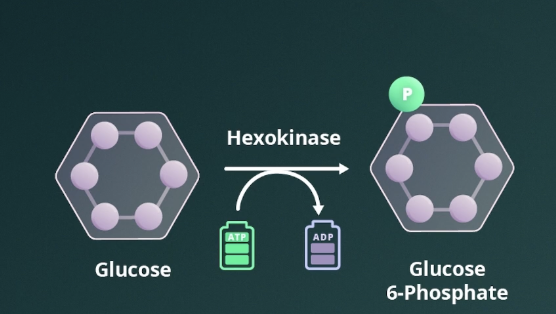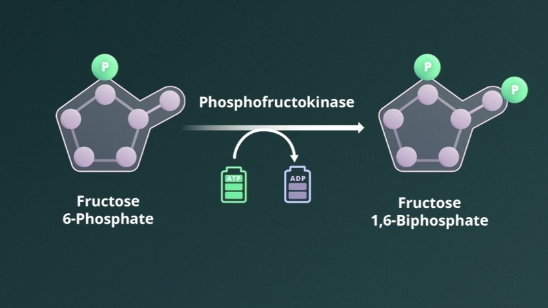5.2 Glycolysis- Cellular Respiration
1/16
There's no tags or description
Looks like no tags are added yet.
Name | Mastery | Learn | Test | Matching | Spaced |
|---|
No study sessions yet.
17 Terms
Reactants in Glycolysis
Glucose + 2 NAD+ + 2 ADP
Products in Glycolysis
2 Pyruvate + 2 ATP + 2 NADH + 2H2O
2 types of Phosphorylation in Cellular Respiration
Substrate- Level Phosphorylation
Oxidative Phosphorylation
Substrate- level Phosphorylation
Enzyme- catalyzed formation of ATP
Direct transfer of a phosphate group to ADP from a intermediate substrate
Oxidative Phosphorylation
Formation of ATP using energy derived from the reactions of an electron transport chain
Is glycolysis aerobic or anaerobic
Anaerobic
Purpose of Cell Respiration
Provide pyruvate for the citric acid cycle
1st Important Step in Glycolysis
Glucose to Glucose 6- Phosphate

Glucose to Glucose 6- Phosphate
Hexokinase uses 1 ATP to convert
glucose ➞ glucose 6-phosphate, making glucose negatively charged and preventing its diffusion out of the cell.
2nd Important Step in Glycolysis
Phosphofructokinase

Phosphofructokinase
(PFK) uses 1 ATP to convert
fructose 6-phosphate ➞ fructose 1,6-bisphosphate, committing the molecule to glycolysis (irreversible, key regulatory step).
- High ATP inhibits PFK, preventing glycolysis.
- Low ATP disinhibits PFK, promoting glycolysis.
High ATP inhibits…
PFK, preventing glycolysis.
Low ATP disinhibits…
PFK, promoting glycolysis.
Glycolysis’s 2 phases
Initial Investment phase
2nd payoff phase
Initial Investment phase
2 ATP invested
Payoff phase
4 ATP
2 NADH produced
2 net ATP produced in glycolysis
Recap of Glycolysis
Overall: Taking 6 C molecules of glucose and making 2×3 C molecules of pyruvate
Net Production of:
- 2 ATP
4 are produced, however, 2 were utilized during glycolysis
2 molecules of pyruvate
2 molecules of NADH
NADH is an electron carrier useful for later steps of cellular respiration
Note that we need NAD+ to be available to proceed with glycolysis and create NADH